Wesley College
Clunes Campus
Former (Methodist) Church, Service Street, Clunes
B unknown (English 1860s - inscription in pallet box says "Francis N****** fecit 186*" -
parts illegible, may be Francis Nicholson, Newcastle, UK).
Inst. c.1866 William Anderson Wesleyan Church, Prahran;
inst. 1871 Wesleyan Church, Daylesford.
Inst present loc 1882 (supplied by William Anderson).
Res. 2004-2005 South Island Organ Company.
1m, 6spst, pedal pulldowns, tr. Man: 8.8 divided.8.8.4.2.
September 2006 organ temporarily placed in Sacred Heart Cathedral, Bendigo
on loan and placed back at Clunes November 2010.
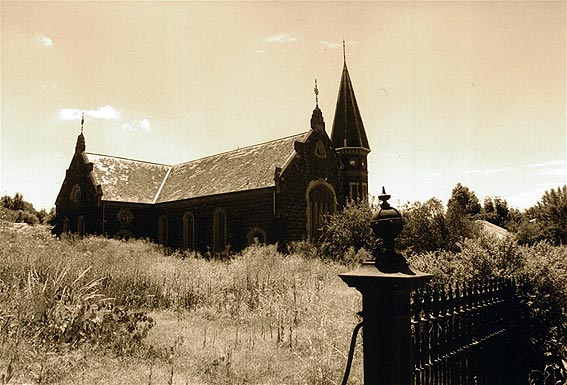
Photo: Simon Colvin
This distinctive bluestone building in the Gothic style was designed by the Ballarat architect J.A. Doane, begun in 1864 and extended in 1871.1 It consists of a broad nave and transepts with galleries, these having cast iron balustrades. The facade incorporates a slate-roofed octagonal turret and spire and a four-light perpendicular Gothic window. The interior includes windows with quarry glass panes and coloured borders; those on either side of the organ incorporate scrolled texts and may be by the Melbourne makers Ferguson & Urie. With declining congregations, the property was taken over by Wesley College and has been developed as its Clunes campus. The church building has received a very extensive restoration, including structural strengthening, the opening out of the interior to its original dimensions and the installation of a new floor.
The builder of the organ is uncertain although a deteriorated handwritten paper fragment in the pallet box recorded the name of Francis N********2 fecit 186* who may well be Francis Nicholson, of Newcastle-upon-Tyne, the only organbuilder of the period to have such a first name according to the Freeman-Edmonds Dictionary of British Organ Builders.3
The Daylesford Mercury and Express reported in January 1871:
"The choir of Wesley Church have procured on their own responsibility a very fine little organ, and yesterday we had the pleasure of hearing the instrument. We have no hesitation is saying that we have not heard a sweeter toned organ in the colony. The instrument was brought out from England about five years ago, by Mr Anderson, organ builder of South Yarra, who has re-erected the organ in Wesley Church. The instrument has been used in Prahran Wesleyan Church, the trustees of which building have sold the organ to the present owners, to make room for a larger one. The instrument has seven stops, viz.: Principal 15th, diapason, treble, do. Balance, keraulophon, open diapason, Dulciana 8ft., and 354 pipes. On Friday week the choir give a concert in aid of the organ fund, and Sunday week there are to be special services with the same object."4
The opening of the organ was reported 11 days later:
"Last night the organ just erected at Wesley Church was opened with a concert of sacred music, the choir being strengthened for the occasion by some members of other churches. Mr J. Eggleston, of Prahran, a professed player, presided at the instrument, which had previously been used in the Wesleyan Church there, and was sold to make room for a larger organ. We referred to the instrument on a former occasion, but we may mention that it has seven stops, three pedals, and 350 pipes. Though the bass is somewhat weak, the organ is a very sweet one, and its introduction on Daylesford marks the commencement of a new era in church music."5
The organ appears to have first been placed in the Mount Erica Wesleyan Church, High Street, Prahran around 1866 before its installation and opening at the Wesleyan Church, Daylesford in 1871. It was installed at the Wesleyan Church, Clunes in 1882 by William Anderson.
The organ was initially installed in an eastern gallery and later centrally placed in the building behind the pulpit, as shown in extant photographs. The building was subdivided in the 1950s and the instrument placed to the right of the building within the original nave.
The instrument was fully restored, as the result of a generous benefaction, by the South Island Organ Company Ltd, of Timaru, New Zealand, in 2005-2005 and placed on a moveable platform. The action, winding and pipework were all fully refurbished. The original oak case graining has been carefully conserved and the original patination preserved but the dummy metal façade pipes have been covered with new gold leaf. A new crenellated cornice has been constructed to replace the original, which had been removed. The hand blowing is still operable.
The organ has a number of distinctive features. The casework is of an unusual design and incorporates carved Gothic tracery as pipe shades, the hollow sections backed in red and blue. The console is enclosed within folding doors. The keyboard has rounded ebony sharps and was possibly made by Edward Violette, a specialist manufacturer in London. The square key cheeks have chamfered edges. There is no builder's plate. The carved oak organ bench is new.
The organ was temporarily placed in the south transept of Sacred Heart Cathedral, Bendigo during 2006 and was moved into the restored building at Clunes in November 2010 where it has been placed on a reconstructed central platform enclosed within wooden balustrading. It was first heard publicly on 18 January 2011 during the Organs of the Ballarat Goldfields Festival and demonstrated by Sergio de Pieri OAM. The restored building has excellent acoustics and the sound of the organ projects admirably throughout the space.
| MANUAL Open Diapason Stop Diapason Bass Stopd Diapason Treble Keraulophon Dulciana Sw Principal Fifteenth |
8ft [8] [8] [8] [8] 4 [2] |
TC CC-BB TC TC TC |
Compass: 54/29
Pedal pulldowns
Three composition pedals
Lever swell pedal
Mechanical action 6
1. Victorian Churches, edited by Miles Lewis. East Melbourne: National Trust of Australia (Victoria), 1991, p.150
2. Information provided by John Hargraves, South Island Organ Company, to John Maidment 2006
3. The Freeman-Edmonds Directory of British Organ Builders, edited by David Wickens. Oxford: Positif Press, 2002, vol 3, p.654
4. Daylesford Mercury and Express, 17 January 1871, kindly supplied to John Maidment by Anne Doggett
5. Daylesford Mercury and Express, 28 January 1871, kindly supplied to John Maidment by Anne Doggett
6. Specification noted John Maidment 2006
John Maidment
19 January 2011
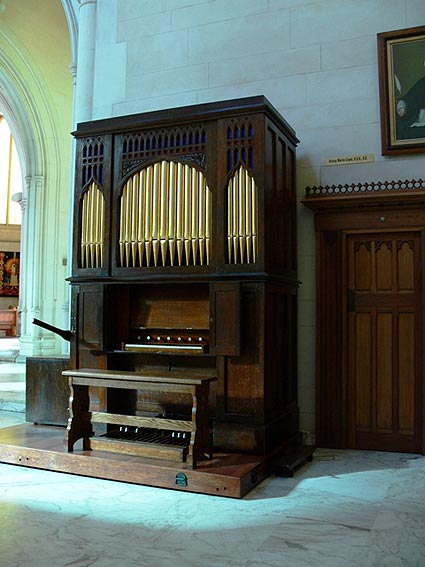
Photo JRM (in Sacred Heart Cathedral, Bendigo)
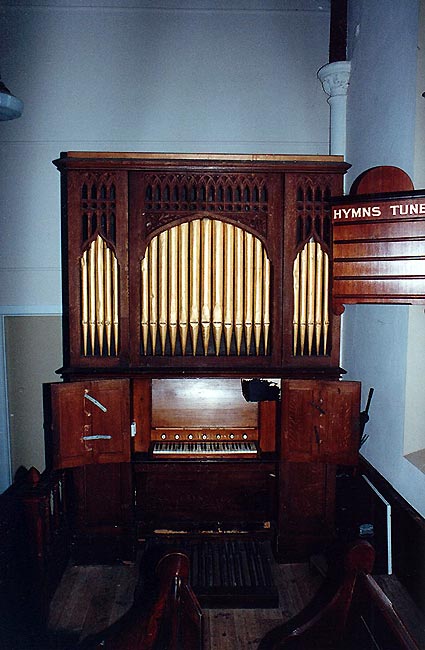 |
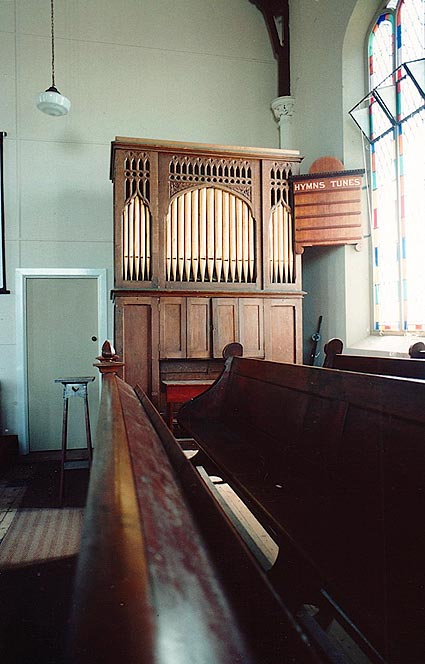 |
Photos before restoration: Simon Colvin
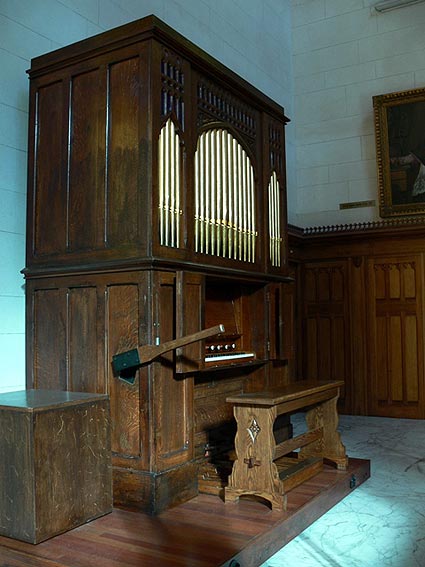 |
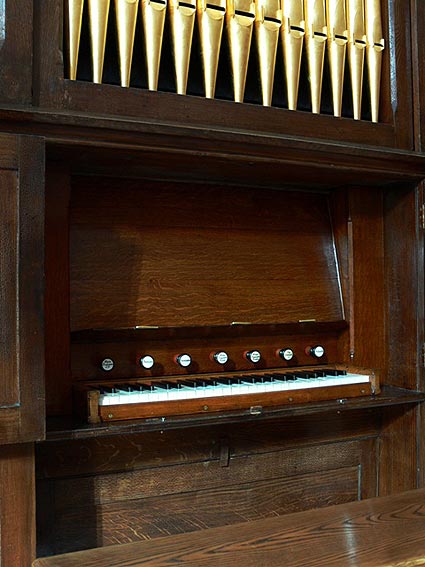 |
Photos after restoration: JRM
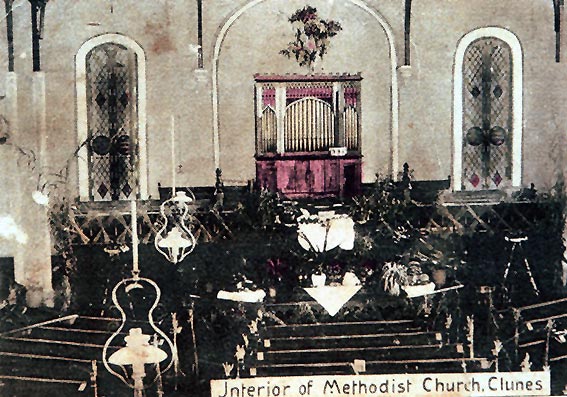
A picture of the organ, from the Uniting Church Archives, Elsternwick, of the organ in its original siting in the Clunes building, centrally at the front.
Provided by JRM
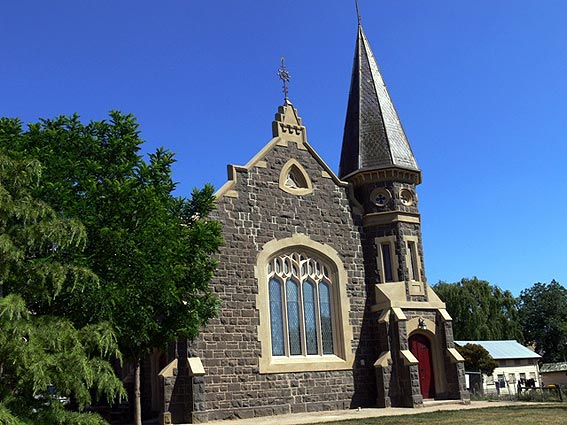
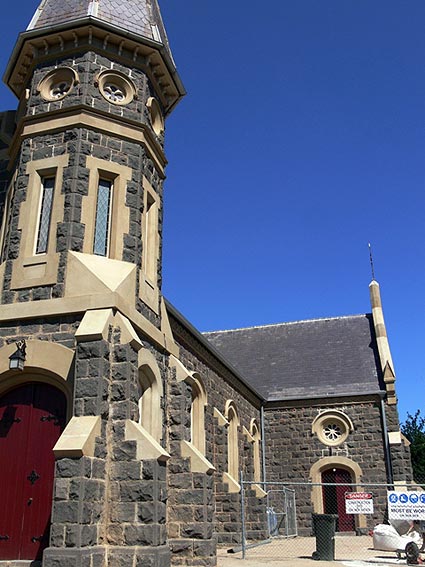 |
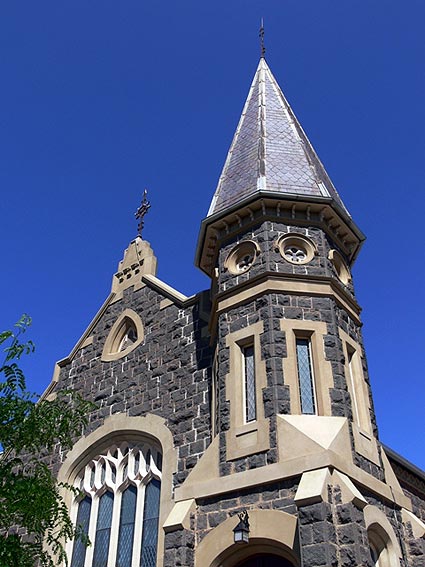 |
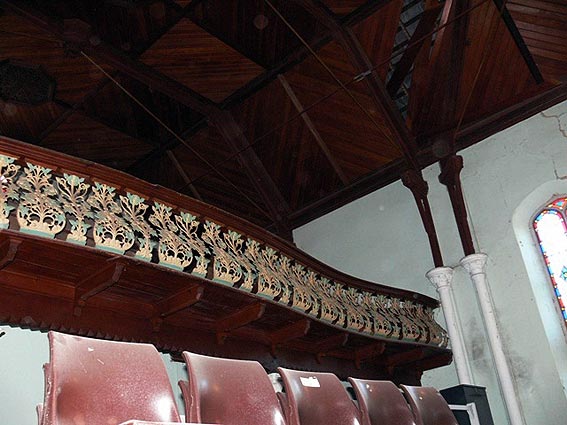
4 photos above: JRM (Dec. 2007)


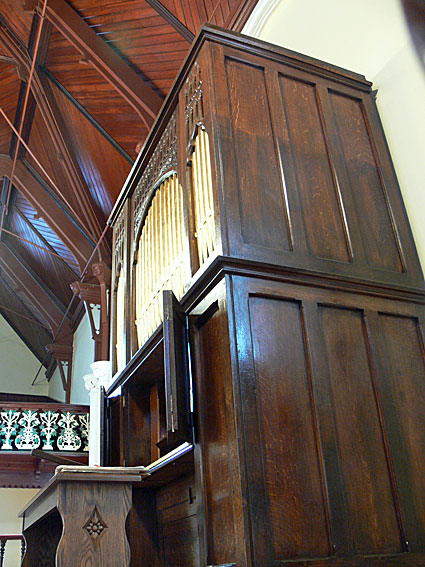
3 photos above: JRM (Jan 2011)
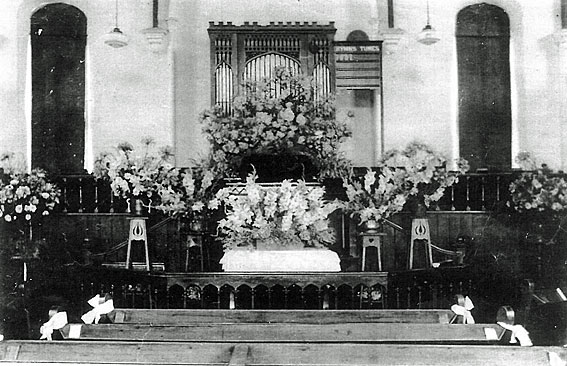
The organ in its earlier central location.
Photo supplied by John Hargraves, courtesy of Ken Corney
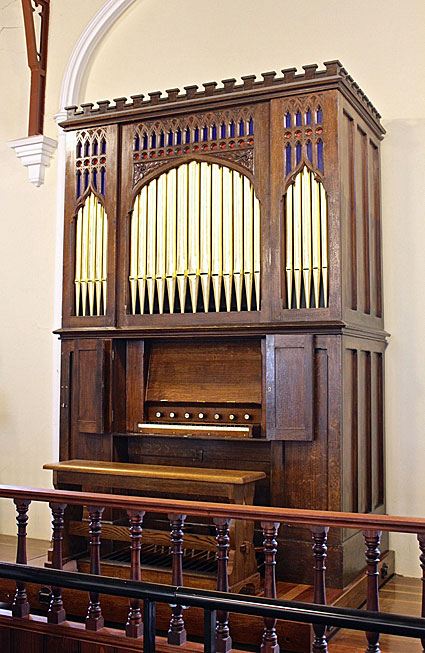


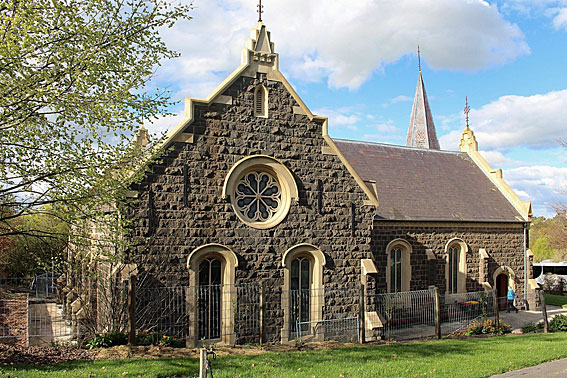
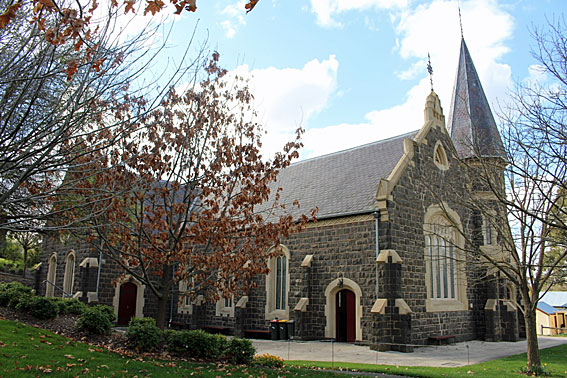
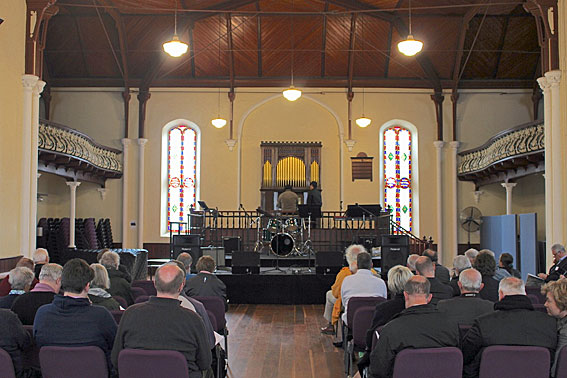
Six photographs above: Trevor Bunning (September 2017)